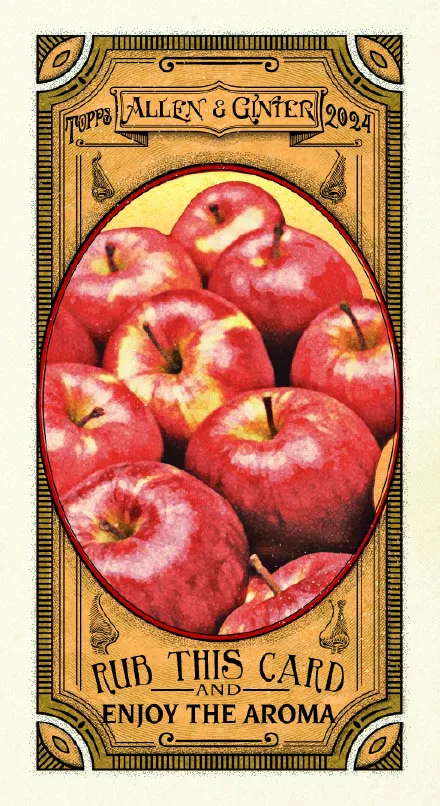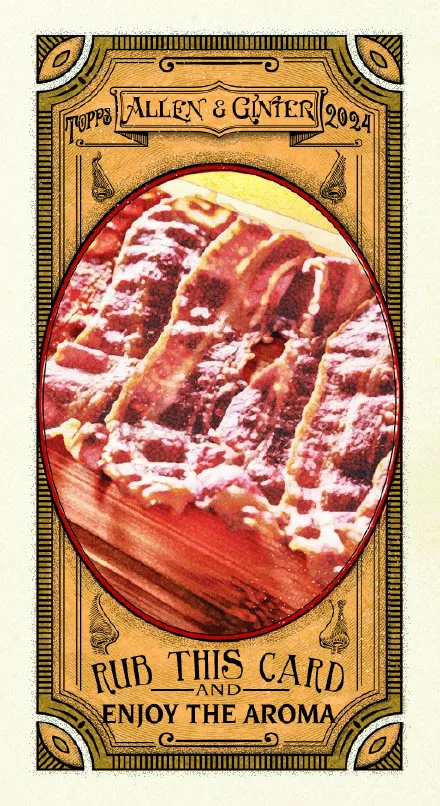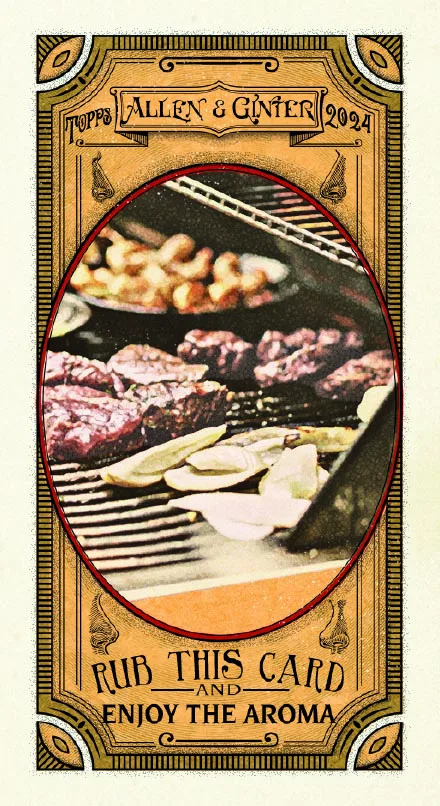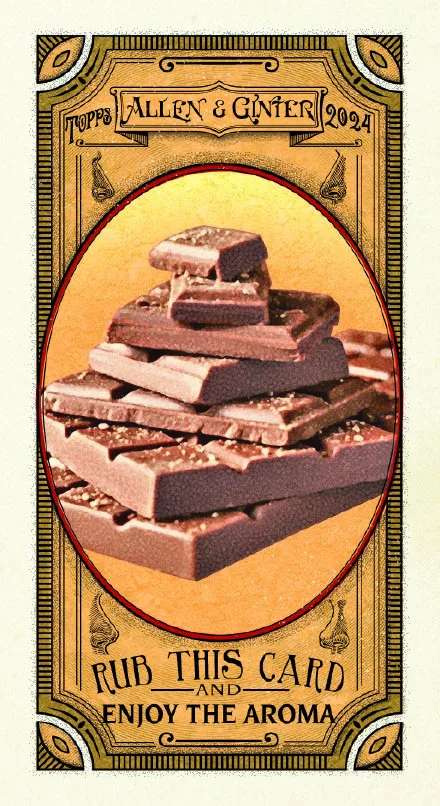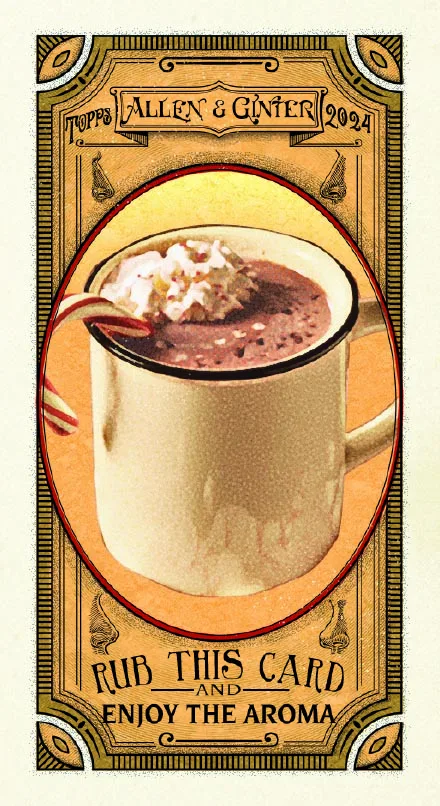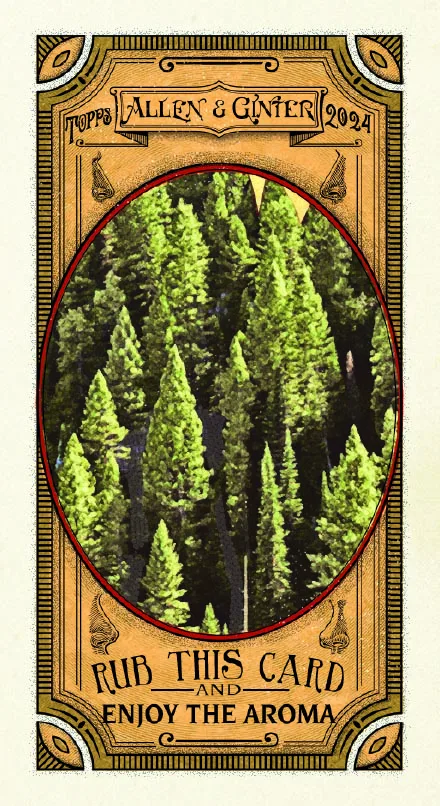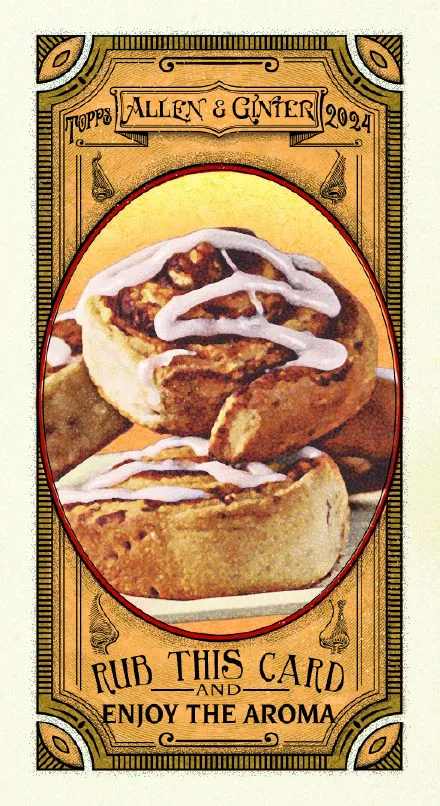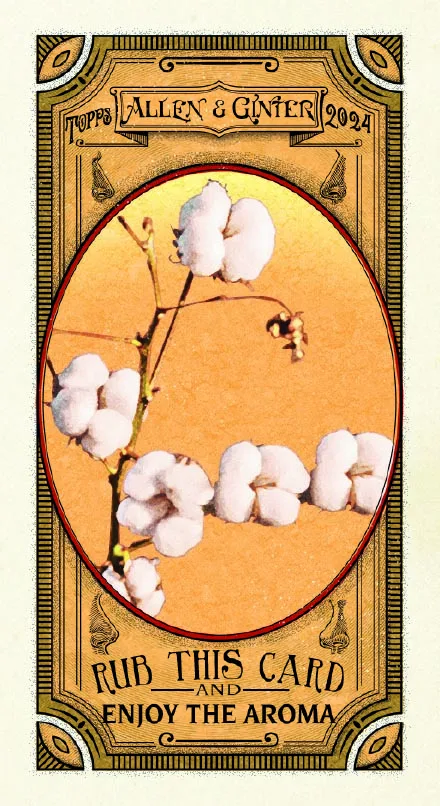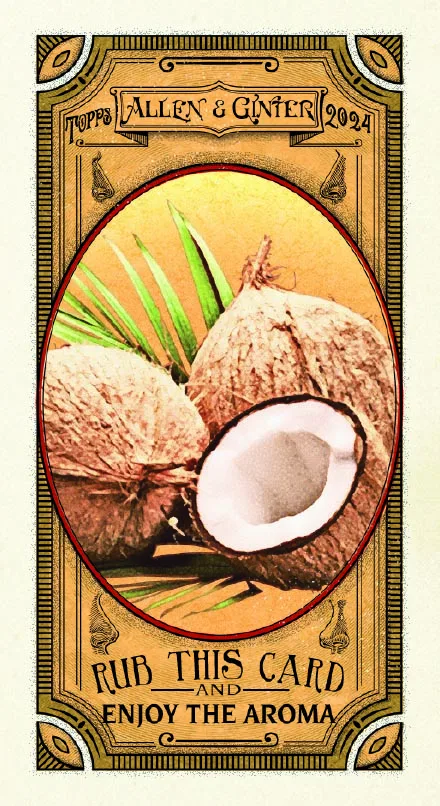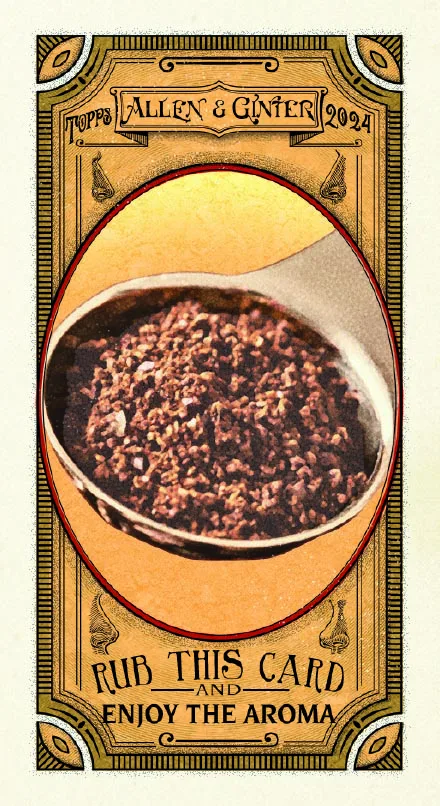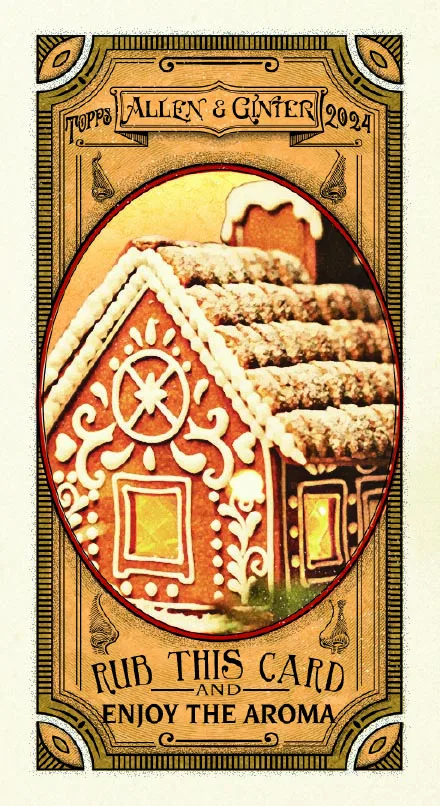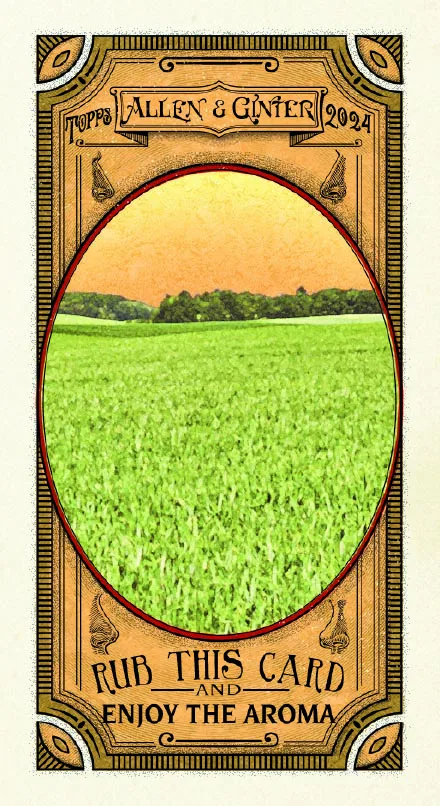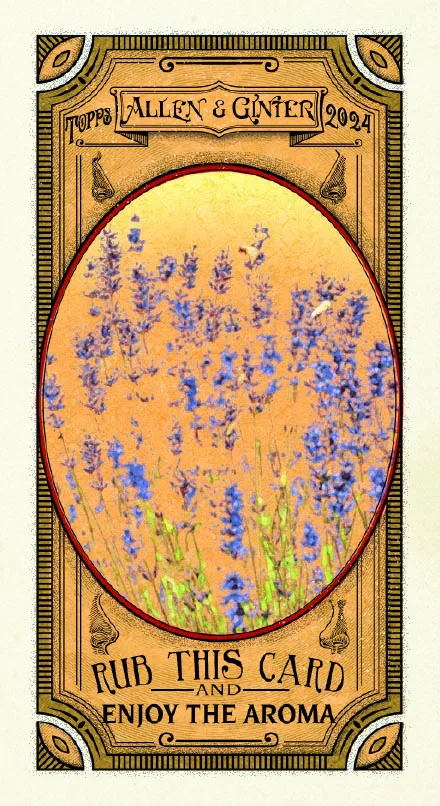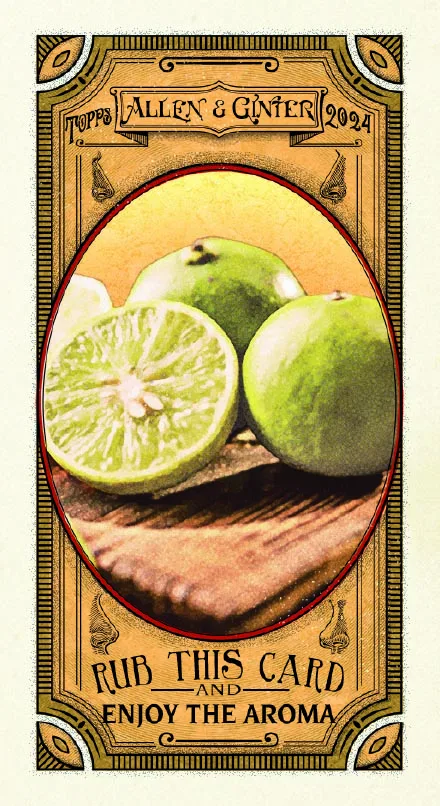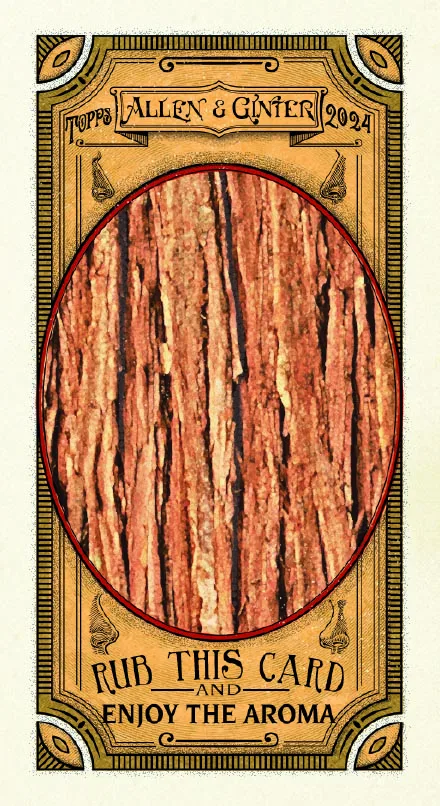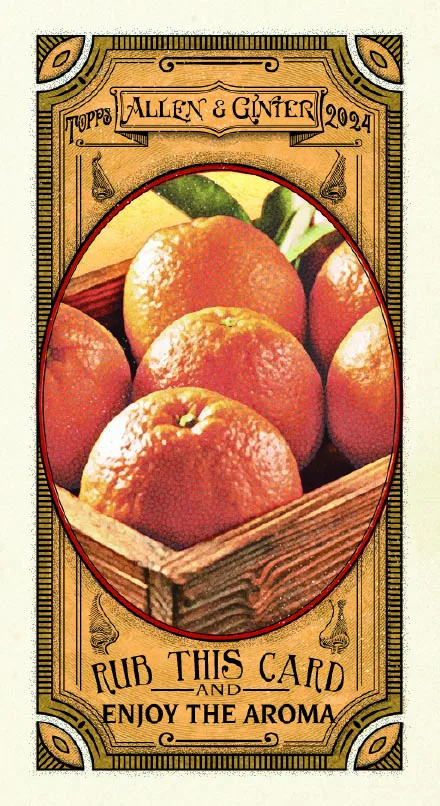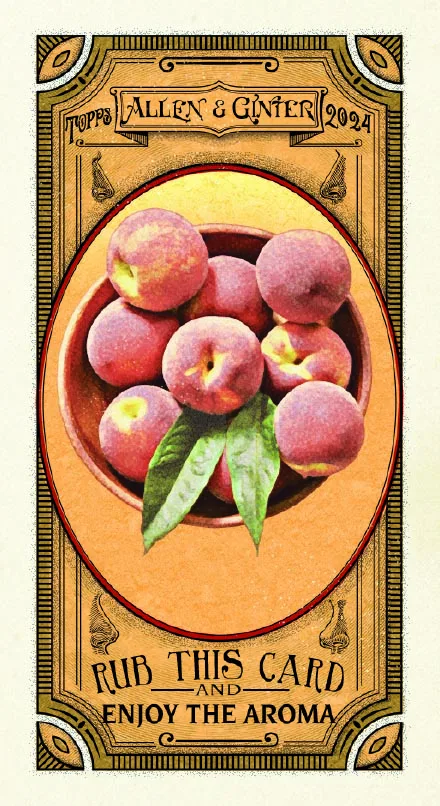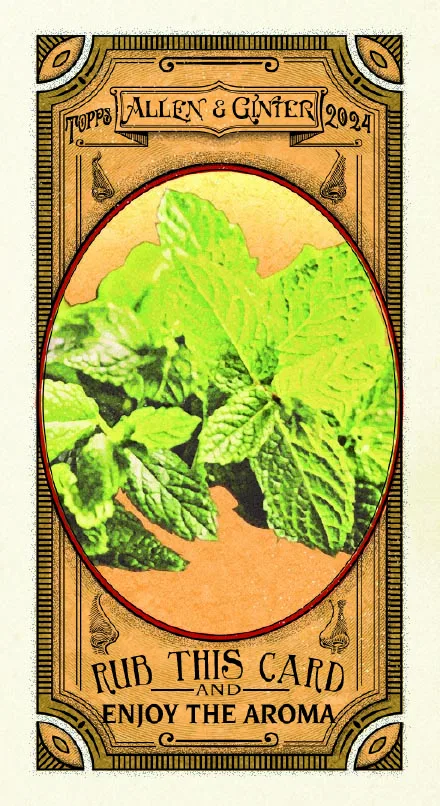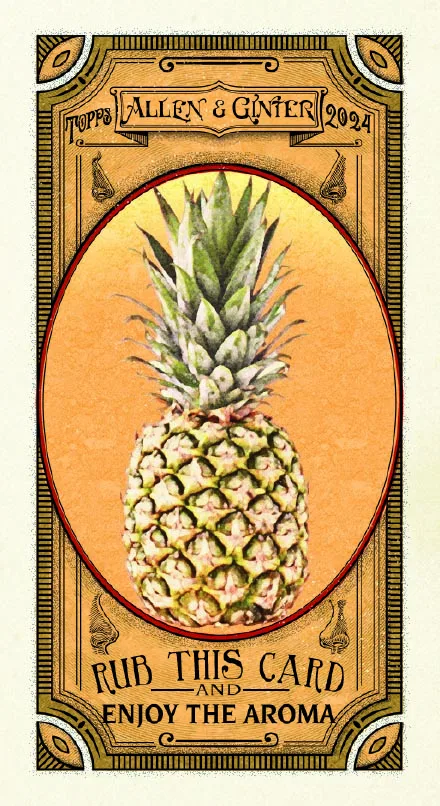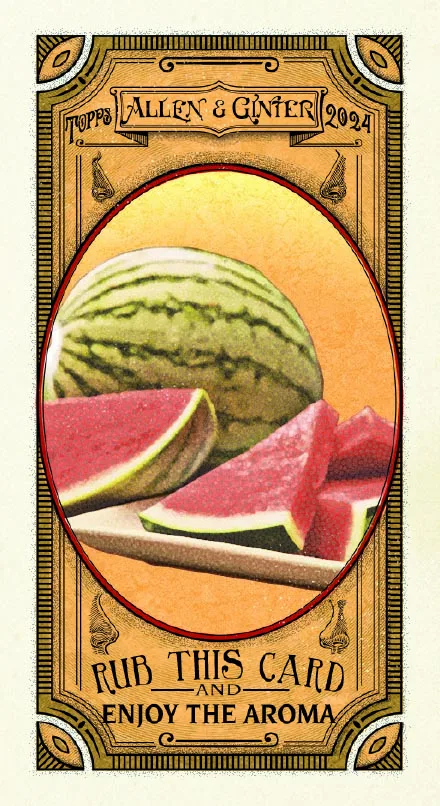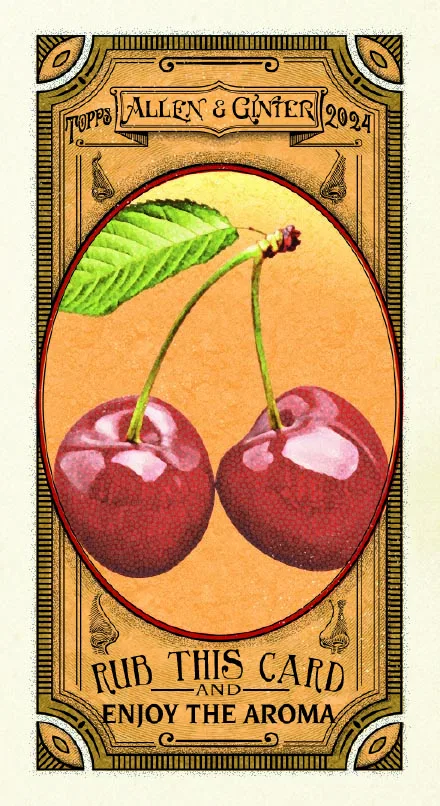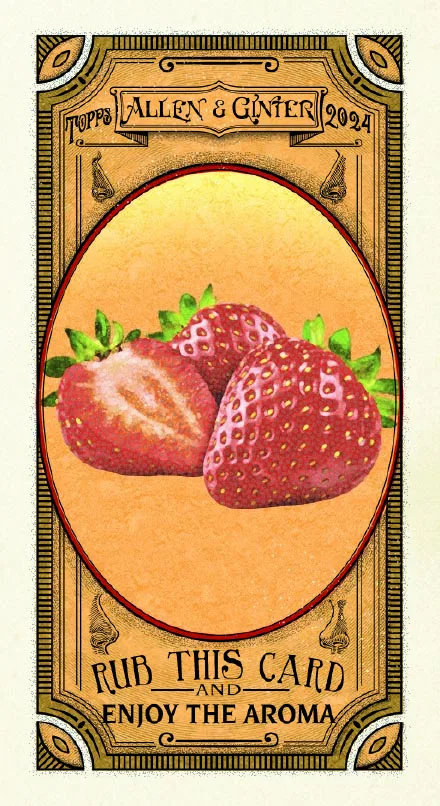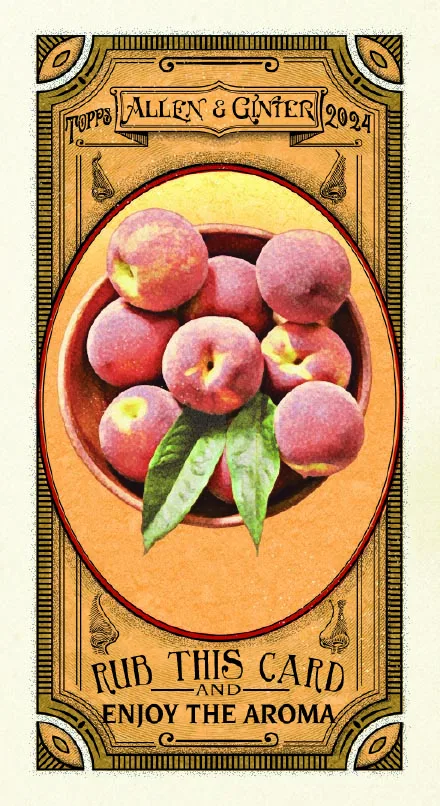
History of Scents on Wax
Puzzle cards, motion cards, Widevision, puppet cards, punch-outs, and stickers are still extant card styles. However, innovations such as foil types, numbered parallels, and relic cards have largely replaced card novelty and wackiness. Scratch-and-sniff cards are a prime example of a popular, wacky card type seemingly relegated to the nostalgia bins of The Hobby.
Although scratch-and-sniff cards are less common today, they occasionally pop up in modern Topps sets. For instance, the 2024 Allen & Ginter collection features the Mini Got the Itch insert set, including 20 scratch-and-sniff cards, each with a unique aroma. But how do scratch and sniff cards work? And how long have they been a staple of Topps trading cards? Let’s dig a bit into the history of this unique card type.
The Origins of Scratch-and-Sniff had Nothing to do with Trading Cards
The technology that makes Scratch and Sniff possible was first patented in 1969 by Gale Matson of the 3M Company. Matson’s plan for “microcapsule-containing paper” – using “small capsules, each comprising a synthetic resin or plastic shell wall, especially an aminoplast shell wall, enclosing a fill particle” – was primarily conceived at first as a new kind of copy paper. However, the original patent also claimed that the microcapsule paper could have “a very wide variety of uses, such as carriers for fuels, waxes, dyes, reactive materials, oils, agricultural chemicals, insecticides, etc.”
Scratch and Sniff arose from this microcapsule technology. In essence, scented oil is mixed with a polymer through a process that causes a protective coating around each tiny droplet. This new substance is then applied to the sticker, card, or whatever material is being used. When you “scratch” the surface, some of the microcapsules will burst, releasing small bits of the captured smell within. However, because of the nature and multitude of the microcapsules, the scent can be contained effectively for a long time, with individual scratches only releasing a small amount.
It Took Many Years for Scratch-and-Sniff Cards to Become Common
In the early years of scratch-and-sniff cards, they were mostly used in children’s books and educational materials, including stickers. Eventually, though, they found their way to the collectible card market, where Topps has used scented cards for decades.
The most famous of these Topps scratch-and-sniff offerings are likely the Garbage Pail Kids “Scratch ‘n Stink” cards, which also appeared in the 1992 Topps Gruesome Greeting Cards set. As the name implies, these cards were designed to capture more exotic odors. “Scratch ‘n Stink” cards have returned many times over the years, with Garbage Pail Kid stickers popping up as recently as 2019.
Scratch and Sniff Strikes Again in the 2024 Allen & Ginter Set
What’s better than a throwback insert set? The 2024 Allen & Ginter baseball collection brings aromas of the retro Topps era with its new Mini Got the Itch inserts, featuring 20 different Scratch and Sniff cards. Unlike the Garbage Pail Kids, these are pleasant scents accented by a classic card design. Rip packs to collect all 20 cards, including smells like peaches, cedar, leather, and chocolate.
While they’ve always been a bit of a novelty, scratch-and-sniff cards also represent the fun and playfulness still intrinsic to Topps and The Hobby. Taking it seriously doesn’t have to mean removing the quirkier elements, and as long as there are Topps trading cards, there will likely be a couple of scratch-and-sniff cards every now and then to pay homage to the good ol’ days.
